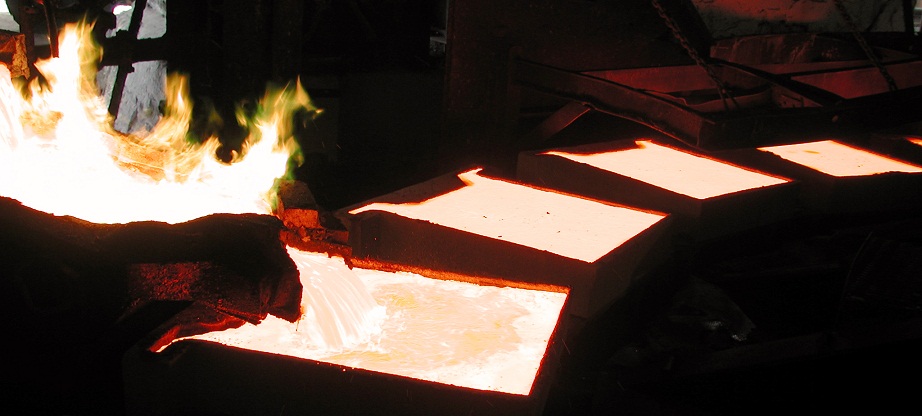Thompson Creek Metals (TCM-T, TC-N) has built its reputation as being a go-to name in the molybdenum space, largely thanks to its namesake mine that ranks as the fourth largest molybdenum mine in the world.
But with the price of the metal floundering and a new copper and gold mine set to come on stream later this year, investors may start to think of the company in a different way.
“The moly market is struggling to get its legs underneath it,” Thompson Creek's chairman and chief executive Kevin Loughrey says. “That is the difficult news from the first quarter.”
Molybdenum was selling for above US$45 per lb in the height of the commodity bull cycle before collapsing to below US$10 per lb during the financial crisis of 2008. Since then, it hasn't been able to find its former momentum, climbing up into the US$18 range before beginning a downward trajectory in 2011. Over the last 12 months, it has fallen from just above US$14 per lb to its current price of US$11.34 per lb.
The problem has been a combination of both too much supply coming on stream and demand falling off as global growth slows.
“Moly does well when the world economy is clicking along,” Loughrey says. "And that is not happening right now ... we need a catalyst in the market place – I’m hard pressed at moment to see what that catalyst will be. Something will happen to turn the market around, but what it will take for prices to recover and absorb some of that new production I can’t see right now.”
And while the soft condition of the market isn't forcing the company to cut production, the idea isn't off of the table.
Thompson Creek currently has contracts to sell 80% to 85% of its moly production for the year, so moving product isn't a problem. The issue is that while those contracts force buyers to commit to how much volume they will take, they do not stipulate a price. Instead price is determined by the spot price from the previous month. That means the falling molybdenum price flows right through to Thompson Creek's books.
As for the remaining 15% of supply not covered by contracts, it is sold directly on the spot market, provided the company likes the price. It has the option to stockpile the material, to a point, if it believes it more prudent to wait for a future price movement to the upside.
It all adds up to an uncertain future for its flagship Thompson Creek mine in Idaho's Custer County, as the company suspended $100 million worth of stripping costs associated with phase eight of the mine plan.
Instead, it will simply carry on with phase seven, which will take it through 2014 and, after that, it will make a call as to whether it wants to commit to phase eight or put the mine on care and maintenance.
When asked on a conference call what the moly price would have to be to keep the mine running beyond phase seven, Loughrey said that it isn't only about the spot price, but also about the company's forecast of where prices were heading, and therefore giving an exact price was difficult.
"But that price is probably higher than today’s price," he said.
As for the company’s future, Mount Milligan looms large on the horizon.
The copper and gold project in northwestern B.C. is humming along with mill start-up scheduled for August and commercial production expected in the fourth quarter.
The mine is expected to average 81 million lb of copper and 194,500 oz of gold production per year over its 22-year mine life, which will provide important diversification for the company.
"I don’t see copper and moly prices as being tied together," Loughrey says. "In 2006, when we became a public company, it was a tough moly market ... no one really even had a sense of what moly was. So we looked for a commodity that was better known, and we landed on copper."
The company's research showed the prices of the two metals had a lower correlation than might be expected, as the copper price is more tied to residential demand, while moly's is more connected to steel and industrial demand.
"In general, copper and moly both do well when the economy is strong but they also have different demand and supply cycles," he says.
That is especially evident on the supply side. Unlike molybdenum, copper's current supply surplus is considered by most analysts to be a short term situation, as some of the world's key copper mines continue to age and will come off stream in the coming years.
It has Loughrey feeling bullish on the metals long term prospects, warming to the idea that Thompson Creek will likely one day be a copper and gold company.
"The numbers tell the story," he says. "By 2014 or 2015, we are moving to become a copper and gold company on the basis of revenue."
Not that it was drawn up that way when the company's first started looking into copper some eight years ago.
"Sometimes you get to where you are because that’s where you were driving to and sometimes you find yourself there unexpectedly," he says. "Most of our expectations showed that we would be 50/50 copper and moly company going forward, but if we don’t restart stripping at Thompson, it's hard to see that happening."
Along with the shift in production profile, Mount Milligan will also likely bring about a restructuring of the company's roughly $1 billion in debt.
"It is better for us to be in production first and then get re-rated," he says. "You get more credit if you are in production for a while."
The company is currently paying down US$100 million in debt each year, and the first principle repayments begin in 2016.
It has already managed to rid itself of restrictive covenants that were formerly attached to the debt.
Amidst so much change, it is easy to lose sight of the impressive execution that Thompson Creek continues to demonstrate.
Moly production for the quarter was up 74% year-over-year to 7.7 million lb, while cash costs came down to US$5.91 from US$12.95 per lb.
The solid numbers were built on the Thompson Creek mine's consistent performance and improving economics at its Endako mine in British Columbia.
Also positive was the fact that sales were up 18%. Not so positive was the drop in the sale price by 19% to US$11.87 per lb.
For the quarter, the company generated US$109 million in revenues and a net income of US$900,000.
Thompson Creek reaffirmed its production and cash cost guidance for the year, which is estimated to be 27.4 to 30.5 million lb of moly at cash costs of US$6.50 to $7.50 per lb.
The company has US$469 million cash and expects capex for the year to come in at between US$440 million to US$480 million, most of which will be going to Mount Milligan.
To read more Northern Miner articles, click here





Comments